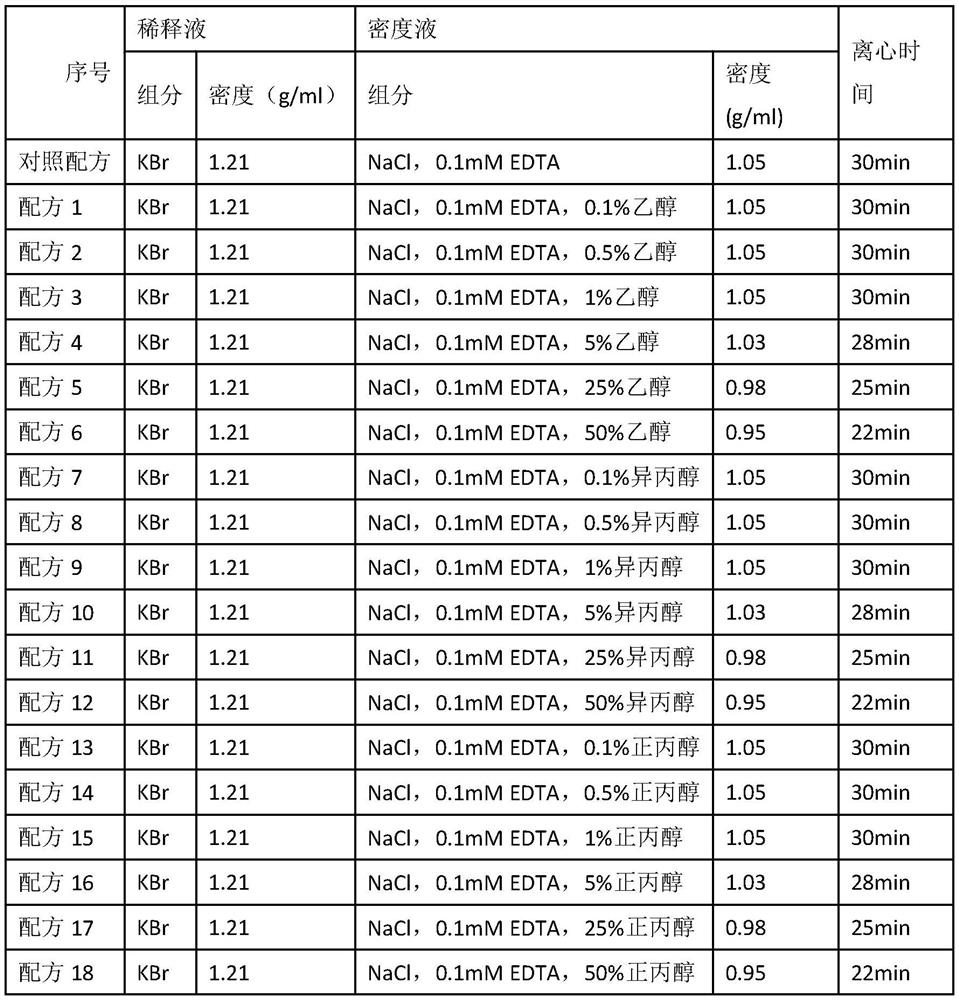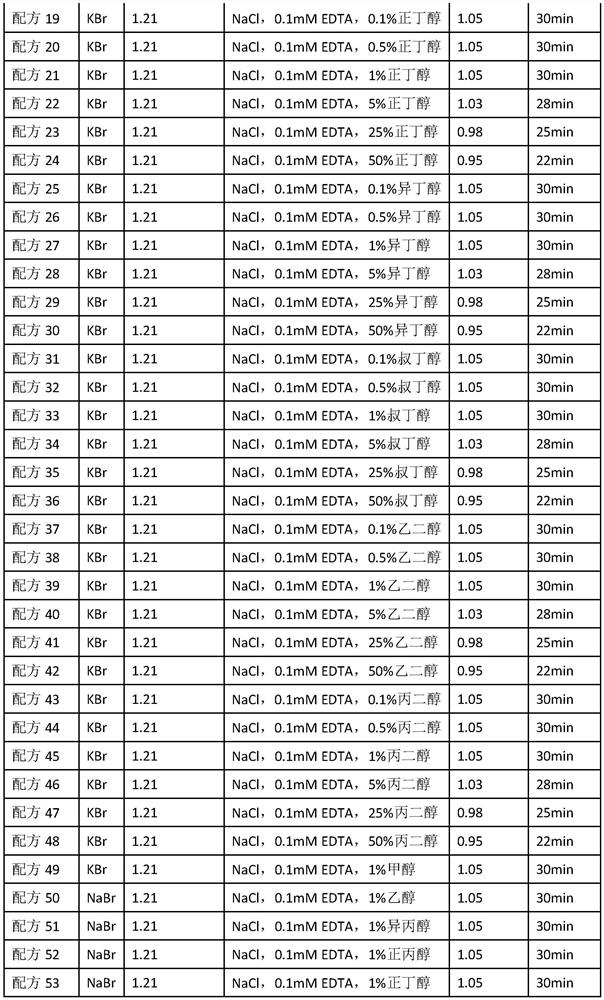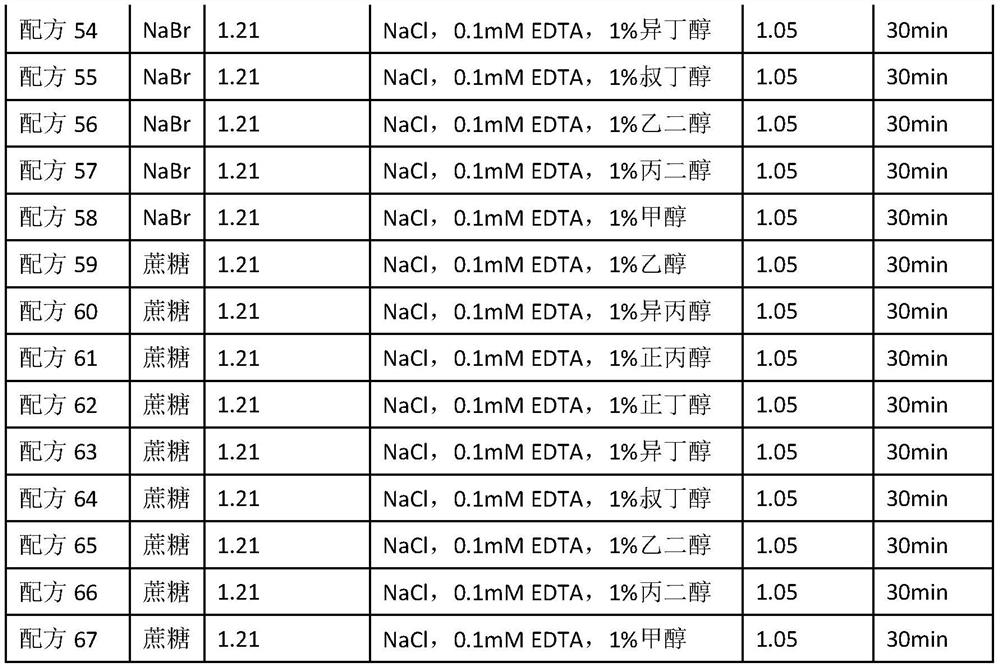A reagent for detecting the concentration of lipoprotein particles and its application method
A technology of lipoprotein particles and lipoproteins, applied in particle suspension analysis, measuring devices, suspension and porous material analysis, etc., can solve problems affecting precision and poor precision
- Summary
- Abstract
- Description
- Claims
- Application Information
AI Technical Summary
Problems solved by technology
Method used
Image
Examples
Embodiment 1
[0037] Reagent preparation and detection steps
[0038] Take 50ul of serum, add 1950ul of diluent (see Table 1 below), and mix well. Take a 5.0ml Polyallomer quick-seal tube, add 3800ul of density solution (see Table 1 below), and then slowly add 1200ul of the pre-diluted serum sample from the bottom. The centrifuge tube was placed in a rotor VTi-65.2 rotor and centrifuged with a Beckman ultracentrifuge. Parameters: rotating speed=65000rpm, time (see table below), temperature=23°C, acceleration=6, deceleration=6.
[0039] Carefully move the centrifuged sample to the lipoprotein particle concentration detection instrument for detection. The buffer used in the detection on the machine is 20mM phosphate buffer, pH 7.0.
[0040] Table 1. Formulas of different combinations
[0041]
[0042]
[0043]
[0044] The concentration of some substances in the above table is not indicated, such as KBr, which is used to adjust the density of the diluent. According to the density...
Embodiment 2
[0046] Precision experiment
[0047] Take a sample, use this detection system, repeat detection 10 times, calculate the precision of lipoprotein particle concentration, its result is shown in Table 2, the sample formula that adopts is the formula configured in the embodiment, as formula 1 in Table 2 Corresponding to formula 1 in Table 1 (components: diluent KBr, density 1.21g / ml; density solution NaCl, 0.1mM EDTA, 0.1% ethanol, density 1.05g / ml; centrifugation time 30min), the same below.
[0048] Table 2 Precision (sample 1, TG concentration: 1.5mM)
[0049]
[0050]
[0051]
[0052] Table 3 Precision (sample 2, TG concentration: 2.0mM)
[0053]
[0054]
[0055]
[0056] Table 4 precision (sample 3, TG concentration: 3.2mM)
[0057]
[0058]
[0059]
[0060] Table 5 precision (sample 4, TG concentration: 4.5mM)
[0061]
[0062]
[0063]
[0064] Table 6 precision (sample 5, TG concentration: 6.2mM)
[0065]
[0066]
[0067] ...
Embodiment 3
[0070] linear experiment
[0071] Take a high-value sample for each item, dilute it with water into different concentration gradients, and use this detection system for detection to verify its linear range. The specific linear ranges of the verified items are HDL-P: 1-80umol / L; LDL-P: 20-6000nmol / L; Lpa-P: 2-300nmol / L; IDL-P: 1-100nmol / L; VLDL-P: 2-500nmo / L. See Table 3 for the specific results of the judgment dilution R2 of the linear range verification.
[0072] Table 7 Linear range verification results
[0073]
[0074]
[0075]
[0076] It can be seen that the linear range of these lipoprotein particle concentration items can meet the index requirements and cover the range required for clinical testing. Within this linear range, it has good linearity.
PUM
| Property | Measurement | Unit |
|---|---|---|
| density | aaaaa | aaaaa |
Abstract
Description
Claims
Application Information
 Login to View More
Login to View More - R&D
- Intellectual Property
- Life Sciences
- Materials
- Tech Scout
- Unparalleled Data Quality
- Higher Quality Content
- 60% Fewer Hallucinations
Browse by: Latest US Patents, China's latest patents, Technical Efficacy Thesaurus, Application Domain, Technology Topic, Popular Technical Reports.
© 2025 PatSnap. All rights reserved.Legal|Privacy policy|Modern Slavery Act Transparency Statement|Sitemap|About US| Contact US: help@patsnap.com



